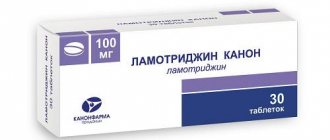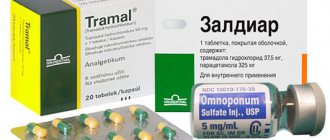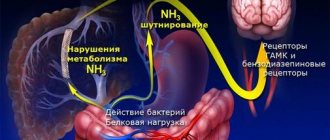Pain or discomfort has an obvious cause: a blow, a cut, muscle overload. But sometimes unpleasant sensations arise in the absence of external influences. Then we can talk about neuropathy - damage to one or more peripheral nerves of a non-inflammatory nature.
Peripheral nerves include all those located outside the brain and spinal cord. They form a wide network, regulate the functioning of internal organs and muscle contraction. Therefore, when neuropathy occurs, a large number of symptoms are formed, which are sometimes mistakenly mistaken for the pathology of a certain organ. But treatment will be ineffective if the cause of the disorders is not established and methods of complex nerve therapy are not used.
Types of neuropathy
The types of neuropathy are determined depending on the number of nerves affected. If only one nerve is involved in the pathological process, they speak of mononeuropathy. This type of disease, compression-ischemic neuropathy, most often occurs in large nerve trunks - the femoral, sciatic, trigeminal or radiocarpal nerve. The pathology is relatively easy to diagnose; symptoms appear in the direction of the location of the nerve trunk in the tissues.
Another type is ischemic neuropathy, but it only affects the optic nerve. In fact, this is his heart attack, leading to a decrease in visual acuity, even to blindness. Separately, there is post-traumatic neuropathy, which occurs as a result of a fracture, compression of a limb, sprain or other injuries.
With polyneuropathy, entire groups of peripheral nerves are affected. The disease can occur simultaneously in several limbs, often symmetrically on different halves of the body, and is accompanied by a large number of symptoms. Depending on the causes, the following types of polyneuropathy are distinguished:
- metabolic – occur due to metabolic disorders, there are diabetic, uremic, hepatic;
- infectious-toxic – develop due to viral diseases (AIDS, leprosy, Lyme disease);
- toxic - nerve fibers are damaged by poisons, heavy metals, alcohol, possible with an overdose of medications;
- hereditary - it includes inherited genetic diseases and syndromes: Refsum's disease, Roussy-Levi syndrome, Charcot-Marie-Tutte amyotrophy;
- nutritional – occur in people with malnutrition and a deficiency of certain vitamins;
- autoimmune - are formed when the immune system attacks its own nerve fibers, these include Miller-Flesher syndrome, paraneoplastic neuropathies in cancer, paraproteinemic polyneuropathies.
Neuropathies are divided into several types, depending on the nature of the damage to the nerve trunk. They can be axonal, when the inner part of the nerve is damaged, and demyelinating, in which the sheath is destroyed and the transmission of the nerve impulse is disrupted.
Causes of the disease
Patients do not always seek help in a timely manner. The reason for this is the numerous misconceptions associated with this disease. So, many are sure that causeless pain will go away on its own. But this is not true; over time, the pathology progresses and treatment becomes more difficult.
The cause of nerve dysfunction is several factors at the same time. In diabetes, damage occurs due to impaired blood supply and metabolism in the nerve tissue, the formation of edema and compression, and the synthesis of antibodies to the membrane of the nerve trunks. As a result, they atrophy and lead to the appearance of pathology.
Toxic and infectious lesions are also associated with the destruction of the outer sheath of nerve fibers. With alcoholism, vitamin B12 deficiency, excess B6 and nutritional disorders, small peripheral nerve processes - axons - are primarily destroyed, which causes loss of sensitivity in the hands or feet.
Vascular atherosclerosis, thrombosis of small capillaries, together with metabolic disorders, also cause neuropathy. This type of damage affects the optic nerve. In pregnant women, polyneuropathy is associated with the production of antibodies, disruption of nerve nutrition and toxic damage from their own metabolic products.
Hereditary neuropathies are characterized by genetic disorders that lead to changes in metabolism and the accumulation of toxic substances in tissues. They damage the myelin sheath of the nerve. In some cases, a hereditary disease leads to gradual atrophy of groups of nerves and severe motor and sensory disorders that cannot be treated.
Symptoms of polyneuropathy
The reason for contacting a neurologist is causeless pain or a feeling of discomfort. Symptoms of neuropathy depend on the type of disease, whether the inner part of the nerve or just its sheath is involved in the pathological process.
The following symptoms should alert you:
- sudden tingling or burning sensation;
- muscle weakness;
- disturbance of temperature sensations;
- inability to perform certain movements of the limbs;
- gait disturbances;
- visible muscle atrophy, body asymmetry.
Sometimes pathological hypersensitivity appears when a slight touch of a certain part of the body causes severe pain, but with significant impact there is no sensation. Pain sensitivity may completely disappear, so, for example, a minor injury or cut will not be noticed. But due to a violation of innervation, such a wound takes a long time to heal and often turns into a trophic ulcer.
In advanced cases, autonomic disorders appear, blood pressure may increase or decrease, the functioning of the digestive tract changes, the blood supply to the skin deteriorates, it looks pale, dry and atrophic.
Often a person gets used to these sensations and because of this postpones a visit to the doctor. This increases the risk of progression of the disease that causes pathology of the nervous system. Meanwhile, the body's protective resources are depleted. With neuropathy, a painless myocardial infarction can occur, since due to damage to the sensory nerves the person will not feel pain.
Early diagnosis of these conditions can be done using the Medmarvel diagnostic complex, which is installed in medical offices 36.6. Within 10 minutes you will be able to find out if you have early, initial, not yet pathological, manifestations of neuropathy.
Diagnostics
When diagnosing polyneuropathy, a doctor may be primarily interested in answers to the following questions:
- Does the patient have any medical conditions such as diabetes or kidney disease?
- When did the symptoms begin?
- Were the symptoms constant or sporadic?
- How severe are the symptoms?
- What causes symptoms to increase or decrease?
- Did anyone in the patient's family have similar symptoms?
- The doctor needs a complete medical history. The doctor will review the patient's medical history, including symptoms, lifestyle, exposure to toxins, bad habits, and family history of neurological diseases.
- During a neurological examination, the doctor can check tendon reflexes, muscle strength and tone, the ability to feel certain sensations, and coordination.
The doctor may order an examination
- Imaging or MRI tests can detect various diseases (including tumors).
- Neurophysiology. Electromyography records electrical activity in muscles, which can help determine whether symptoms, including weakness, are caused by muscle tissue damage or nerve damage. ENMG checks the conduction of impulses along the nerves and allows you to determine the degree of damage to the nerve fibers. Neurophysiological studies of the autonomic nervous system may also be performed - sensory tests that record how the patient feels touch, vibration, cold and heat.
- Nerve biopsy. A doctor may recommend removing a small portion of a nerve, usually a sensory nerve, to examine morphological changes in the nerve to determine the cause of the nerve damage.
- Skin biopsy. In this test, a small portion of skin is removed to examine the number of nerve endings. A decrease in the number of nerve endings indicates neuropathy.
- Laboratory research methods are necessary to exclude various diseases, such as diabetes mellitus, autoimmune diseases, kidney disease, etc.
How to treat neuropathy
There is no point in looking for a cure for neuropathy on your own. This is a consequence, not a cause. The disease that caused it needs to be treated. In each specific case, its own therapy is prescribed. Therefore, you cannot do without the help of a doctor.
Vasoactive drugs and B vitamins will help maintain the condition, especially in cases of alcoholic or toxic damage. Means to improve blood circulation, restore fiber conductivity and light sedation will not be superfluous.
It’s a mistake to drown out sensations with painkillers. They only relieve discomfort, but do not cure. And the disease that has become the root cause of neuropathy remains unattended.
A healthy lifestyle is not an alternative to therapy. Changing your diet, quitting smoking and exercising are all helpful and will improve your overall well-being. But these measures are secondary and do not replace treatment.
Complex methods of treatment are used to treat polyneuropathy. In some cases, observation by a neurologist and several specialized specialists is necessary - for diabetes - an endocrinologist, for kidney pathology - a urologist, alcoholism - a narcologist.
Tricyclic antidepressants and anticonvulsants help reduce unpleasant painful sensations, convulsive contractions and a burning sensation. (Here we need a link not to Finlepsin, but to Gabapentin) With infectious causes of polyneuropathy, especially those caused by HIV infection, it is impossible to completely recover from the pathology, but with proper treatment of the underlying disease, its progression can be stopped.
Some patients with autoimmune, toxic or metabolic disorders are prescribed plasmapheresis. Blood purification allows you to get rid of substances that cause damage to nerve trunks. At the recovery stage, exercise therapy and physiotherapy are used: electrophoresis, magnetic therapy, laser therapy, acupuncture.
There is no need to put off visiting a neurologist. It is better to select adequate treatment as early as possible, get rid of unpleasant symptoms and prevent further negative effects on the body.
Treatment
The goal of treatment for polyneuropathy is to treat the underlying disease and minimize symptoms. If laboratory tests and other examinations indicate that there is no underlying disease, the doctor may recommend watchful waiting to see if the symptoms of neuropathy improve on their own. If there is exposure to toxins or alcohol, your doctor will recommend avoiding these substances.
Drug treatment
Medicines used to relieve pain from polyneuropathy include:
- Painkillers such as paracetamol or NSAIDs reduce pain
- Medicines containing opioids, such as tramadol (Conzip, Ultram ER and others) or oxycodone (Oxycontin, Roxicodone and others), can lead to dependence and addiction, so these drugs are generally prescribed only when other treatments have no effect.
- Anticonvulsants. Medications such as gabapentin (Gralise, Neurontin) and pregabalin (Lyrica), developed to treat epilepsy, can significantly reduce the pain of neuropathy. Side effects of these drugs may include drowsiness and dizziness.
- Capsaicin. A cream containing this substance (found naturally in hot peppers) can be used to provide some relief from the symptoms of neuropathy. But given the irritating effect of capsaicin on the skin, not all patients can tolerate the effects of capsaicin creams.
- Antidepressants. Some tricyclic antidepressants, such as amitriptyline, doxepin, and nortriptyline (Pamelor), can be used to reduce neuropathy pain through their actions on the central nervous system.
- The serotonin and norepinephrine reuptake inhibitor duloxetine (Cymbalta) and the antidepressant venlafaxine (Effexor XR) may also relieve pain from peripheral neuropathy caused by diabetes. Side effects may include dry mouth, nausea, drowsiness, dizziness, decreased appetite, and constipation.
- Intravenous immunoglobulin is the mainstay of treatment for chronic inflammatory demyelinating polyneuropathy and other inflammatory neuropathies.
- Alpha lipoic acid. Used to treat peripheral neuropathy in Europe for many years. This antioxidant helps reduce symptoms. You should discuss taking alpha lipoic acid with your doctor because it may affect your blood sugar levels. Other side effects may include stomach upset and skin rash.
- Herbs. Some herbs, such as evening primrose oils, may help reduce neuropathic pain in patients with diabetes.
- Amino acids. Amino acids such as acetyl-L-carnitine may help improve symptoms of peripheral neuropathy in patients undergoing chemotherapy and in patients with diabetes. Side effects may include nausea and vomiting.
In addition to drug treatment, other treatment methods may be used.
- Myostimulation allows, to a certain extent, to restore the conduction of nerve impulses through the muscles.
- Plasmapheresis and intravenous administration of immunoglobulin.
- Exercise therapy. If you have muscle weakness, physical activity can improve muscle strength and tone. Regular exercise, such as walking three times a week, can reduce neuropathy pain, improve muscle strength, and help control blood sugar levels. Exercises such as yoga and tai chi can also be quite effective.
- Acupuncture. Impact on biologically active points improves the sensitivity of nerve receptors and reduces pain.
Recommendations for patients with polyneuropathy
- It is necessary to take care of your feet, especially if you have diabetes. You should check your feet daily for blisters, cuts, or calluses. Soft, loose cotton socks and soft boots should be worn.
- You need to quit smoking. Smoking can affect circulation in the extremities, increasing the risk of foot problems and other neuropathy complications.
- Eat healthy. A healthy diet is especially important to ensure that the patient receives the necessary vitamins and minerals.
- We must avoid drinking alcohol. Alcohol can worsen the symptoms of polyneuropathy.
- Monitoring blood glucose levels in the presence of diabetes will help keep blood glucose levels under control and may help improve neuropathy.








